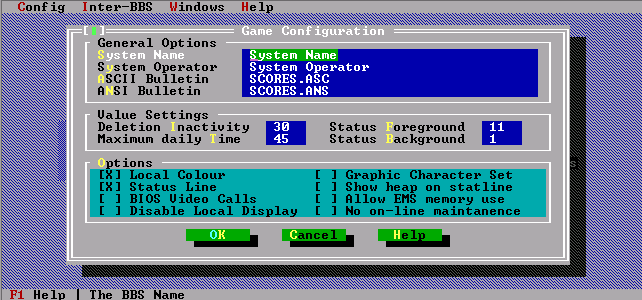

- #WINDOWS SYNCTERM FULL#
- #WINDOWS SYNCTERM SOFTWARE#
- #WINDOWS SYNCTERM CODE#
- #WINDOWS SYNCTERM LICENSE#
- #WINDOWS SYNCTERM WINDOWS#
Effectively every Synchronet sub project relies on xpdev. ini file parsing, consistent *printf() functions, and other small utility functions to the rest of the project.
#WINDOWS SYNCTERM FULL#
In an interesting full circle, direct dial-up support for Synchronet is available again as Rob Swindell wrote a modem to telnet gateway program (SEXPOTS) for this purpose. More internet services have been added in the native (C) code: FTP, SMTP and POP3 by Rob Swindell and rlogin, SSH and HTTP by Stephen Hurd. TCP/IP services written in JavaScript bundled with Synchronet include finger, gopher, IRC, and NNTP. A socket object was added to the JavaScript engine and a "Services" server created which allowed simple TCP/IP services to be written easily. While the BBS still requires BAJA scripts, much can be done with JavaScript. His first "big" contribution was an implementation of Borlands conio library to allow the configuration utilities which were originally written for DOS to run on the Unix-like platforms.Īround the same time, Swindell started embedding the SpiderMonkey JavaScript engine into Synchronet with an eye towards replacing the aging BAJA language which was used for most BBS customizations. He ported the BBS to FreeBSD and did much of the Linux development work. In late 2001, Stephen Hurd (Deuce) joined the project initially as *nix developer.
#WINDOWS SYNCTERM LICENSE#
In October 2000, Synchronet was released under the terms of the GNU General Public License (GPL). For this release, dial-up support was dropped making it a TCP/IP-only system.

#WINDOWS SYNCTERM WINDOWS#
Version 3.00b was released Jand was the first official release of the 3.x series, featuring a native 32-bit Windows version and many new Internet-related features, such as a built-in telnet server. Another version, 2.30c, was released in December 1999, fixing Y2K bugs and introducing some minor new features from the upcoming 3.x series.
#WINDOWS SYNCTERM CODE#
In April 1999, Swindell revived Synchronet development, revamping it considerably and converting much of the code to C++. In 1997, version 2.30 of Synchronet was released as freeware, and the source code was released into the public domain later that year. In August 1996, Swindell announced the uncertainty of Synchronet's future. Despite this, a beta version of version 2.30 of Synchronet for MS-DOS and an alpha version for OS/2 were released in early 1996. Digital Dynamics effectively went bankrupt in the fall of 1995.

Interest in Synchronet began to dwindle in late 1994, finally becoming nonexistent in 1995. It was also the first BBS package with RIP support, in version 1b revision 1, released January 23, 1993.

Synchronet was the first BBS package to support QWK message networking natively without requiring any external utilities, in version 1a revision 10, released June 25, 1992. The first copy of Synchronet sold through the magazine ads was in June 1992. In April 1992, Swindell's employer went out of business and he began to rely exclusively on commercial sales of Synchronet for his livelihood, placing advertisements in the BBS-related magazines Boardwatch and BBS Callers Digest.
#WINDOWS SYNCTERM SOFTWARE#
Initially, he had no intention of releasing Synchronet publicly, but as word of his software spread and he received offers to buy copies of Synchronet, he eventually relented, formed a company called Digital Dynamics, and sold copies of Synchronet at a price of $100 without source code, and $200 with source code. In July 1991, the author began running his own BBS, Vertrauen, on Synchronet. The software was named for its ability to run synchronously on a network. The bulk of the programming for the first version of Synchronet was done during a two-month period in 1991 when Swindell was house-ridden while he recovered from surgery. Digital Man) due to his desire for certain features which WWIV lacked, such as support for multiple simultaneous nodes, batch uploads and bidirectional file transfer. Synchronet was originally written by Rob Swindell ( a.k.a.


 0 kommentar(er)
0 kommentar(er)
